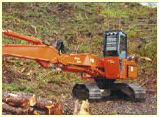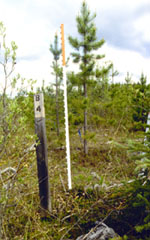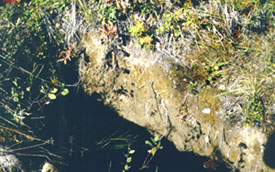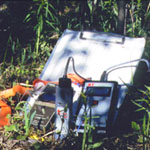Graduate Students:
Derek Mackenzie, MSc Candidate, 1998/1999
What is the effect of mechanical site preparation on soil properties, nutrient dynamics and tree growth?
The effect of mechanical site preparation on soil properties, nutrient dynamics and tree growth: 10th year results from sites in Northern British Columbia. 1999.
Intensive silvicultural practices create disturbances that can affect the nature of forest soils and the future productivity of the site. Mechanical Site Preparation (MSP) is used in reforestation. The goal of MSP is to improve the site quality, to increase seedling establishment and to increase crop-tree survival. These goals may be achieved by changing the distribution of the forest floor and the mineral soil. In changing the distribution of the forest floor and the mineral soil, MSP may affect the soil moisture, soil temperature and nutrient regimes. Two research sites were used for this study, both located in the northern interior of British Columbia.
The Bednesti site is located in the Sub-boreal Black Spruce (SBS) biogeoclimatic zone and the Inga Lake site is located in the Boreal White and Black Spruce (BWBS) biogeoclimatic zone. Differences exist in the growth of crop-trees planted on different MSP treatments at both sites. To test the theory that the nutrient regime is affected we assessed: the seasonal nutrient regime, with ion exchange resins; the total and available amounts of nutrients, with grab samples; and the seasonal nutrient uptake, with foliar nutrient analysis. The seasonal soil temperature and soil moisture regimes were also measured.
Bedding technique (bedding plow), a high speed mixing technique (madge) and burned windrows (fire) all had the highest crop-tree growth. The bedding plow and the madge both had lower seasonal soil moisture and higher soil temperatures than the other MSP types. One-way ANOVA showed that in many cases the bedding plow and the madge had higher concentrations of soil nutrients than an untreated control, while fire had nutrient values similar to the control. The seasonal nutrient availability did not seem to differ between treatments except for the furrow microsite which had the lowest nitrogen availability and the lowest crop-tree growth. Foliar analysis also did not show many differences between the foliar element concentrations and probably did not affect crop-tree growth.
PUBLICATIONS:
MacKenzie, M.D. 1999. The effect of mechanical site preparation on soil properties, nutrient dynamics and tree growth: tenth year results for two sites in northern B.C. MSc. thesis. Simon Fraser University, Burnaby, B.C.
Back to mechanical site preparation



